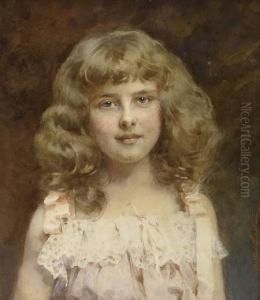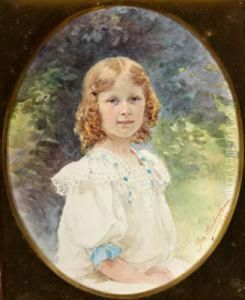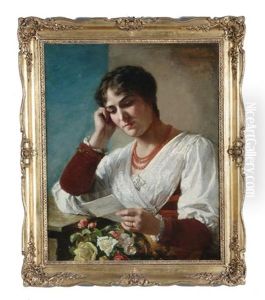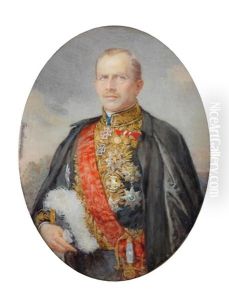Josefine Swoboda Paintings
Josefine Swoboda was an Austrian portrait painter born on June 19, 1861, in Vienna, Austria. She hailed from a family deeply entrenched in the arts; her father, Eduard Swoboda, was a recognized landscape and genre painter, and her uncle, Rudolf Swoboda, was also a well-regarded painter, famous for his detailed and culturally rich works. This environment nurtured her talents and passion for art from a young age. Despite the challenges faced by women in the arts during the 19th century, Swoboda carved out a successful career for herself, largely focusing on portraiture, where she excelled in capturing the essence and personality of her subjects.
Swoboda received her artistic training in Vienna, but her style and technique were greatly influenced by her travels across Europe, particularly in England, where she spent a significant amount of time. Her work caught the attention of the British royal family, and she became a favored artist of Queen Victoria. Swoboda's portraits of the royal family and their associates highlight her ability to blend the traditional with the modern, combining meticulous detail with a sensitivity to the character of her subjects. This acclaim significantly boosted her reputation and led to numerous commissions from aristocracy and high society across Europe.
Throughout her career, Josefine Swoboda was celebrated for her contribution to portrait painting, a genre traditionally dominated by male artists. Her works were known for their vibrant realism, nuanced use of color, and the subtle yet expressive depiction of her subjects. Despite the prominence she achieved during her lifetime, Swoboda's legacy faded somewhat after her death in 1929. Recent years, however, have seen a resurgence of interest in her work, as part of a broader reevaluation of the contributions of female artists to the history of European art. Today, her paintings are recognized not only for their artistic merit but also for their historical significance, offering insights into the social and cultural life of her era.



